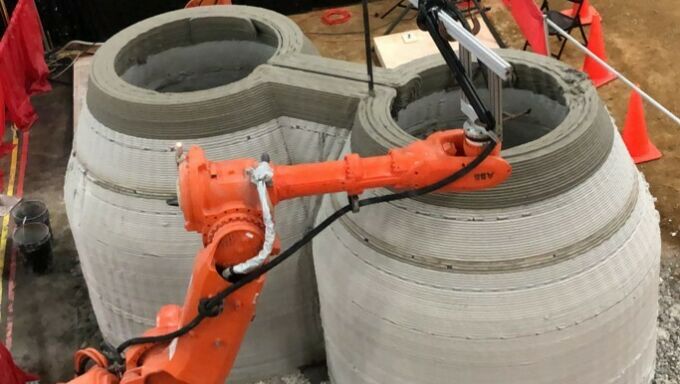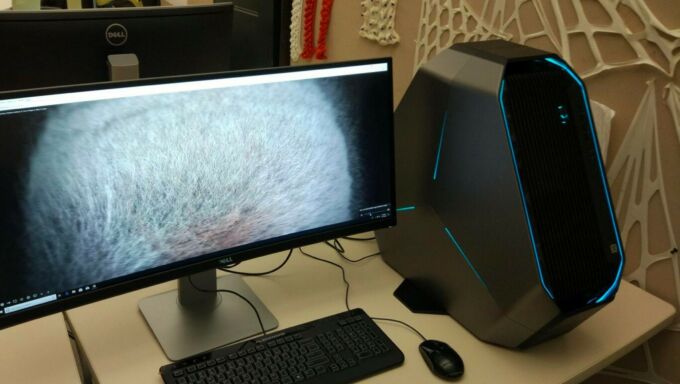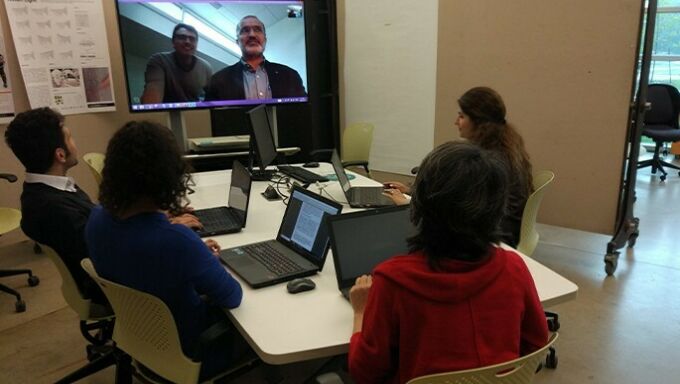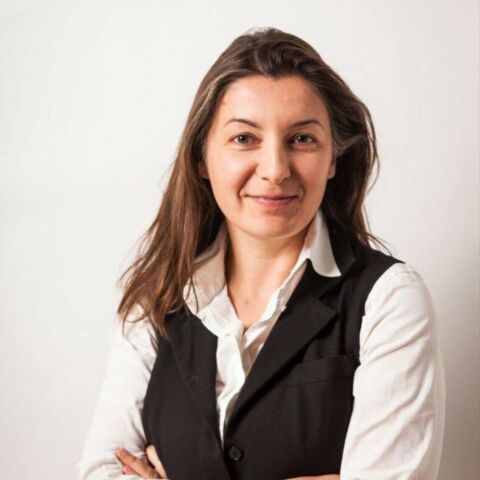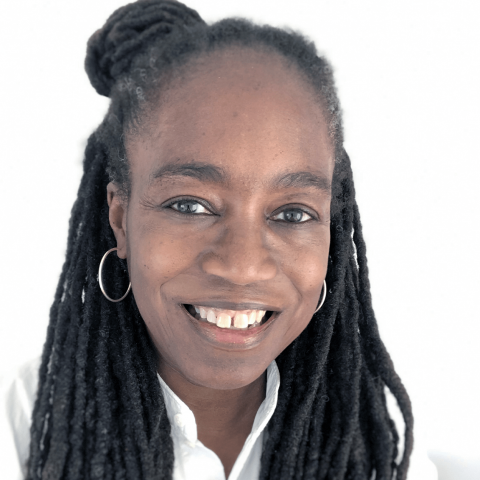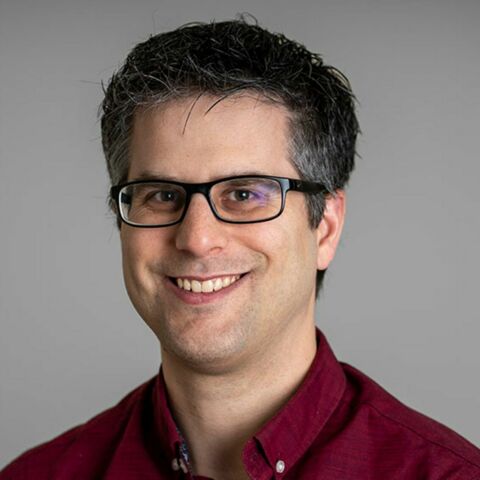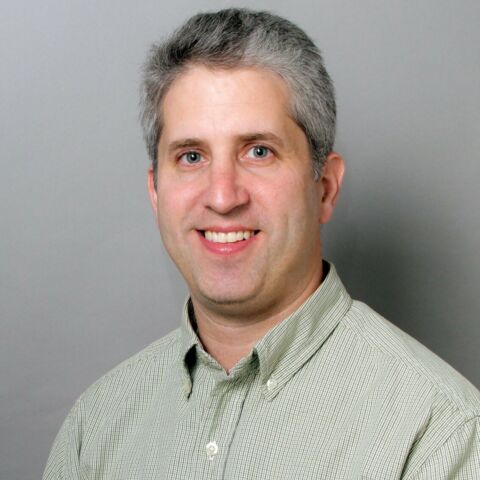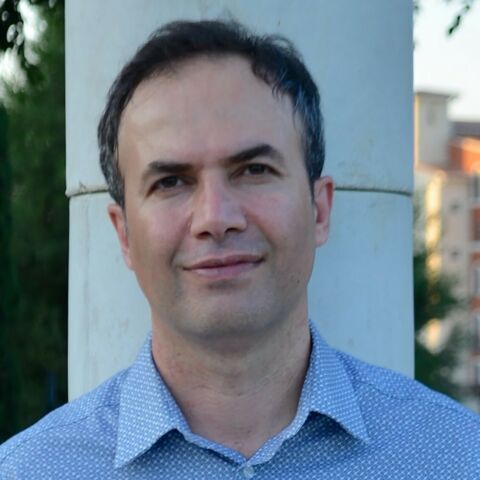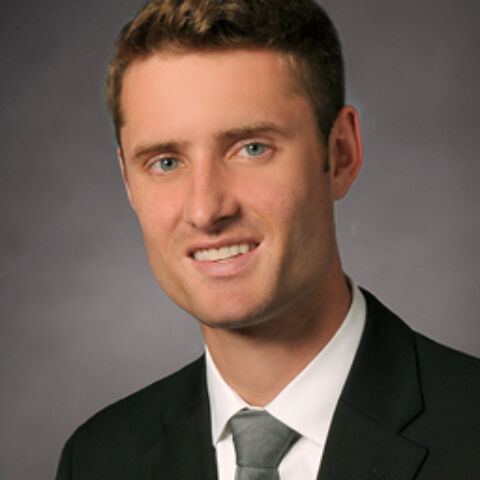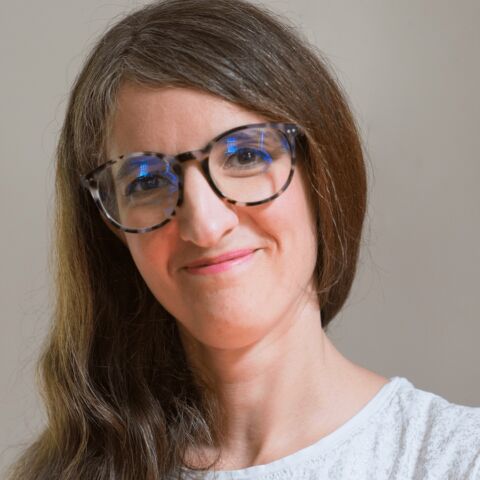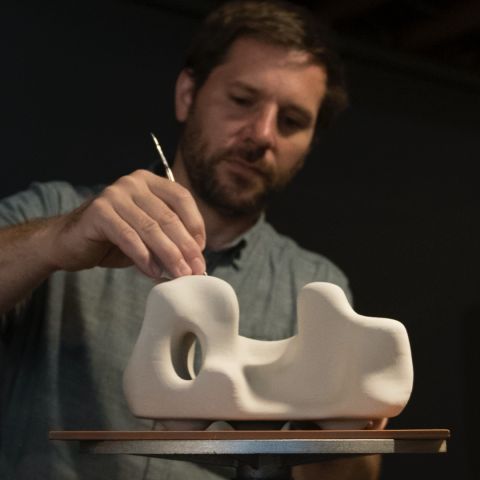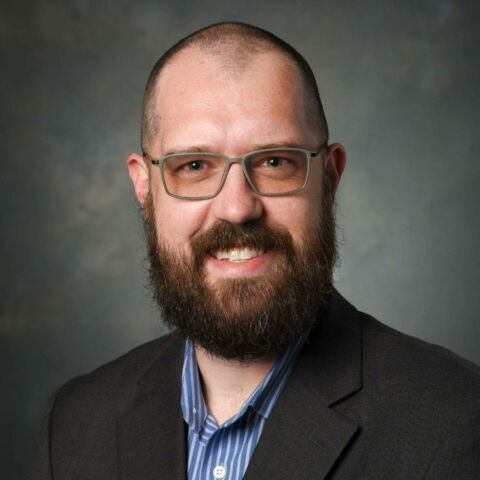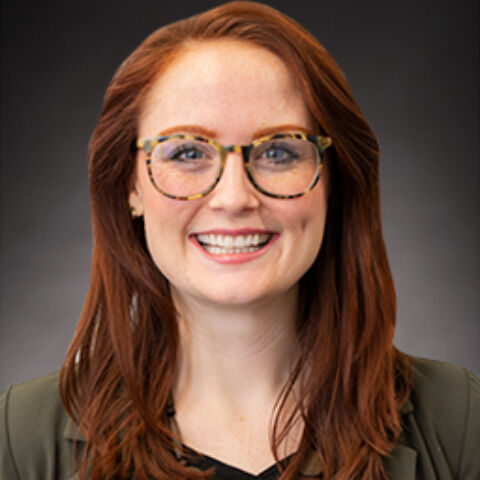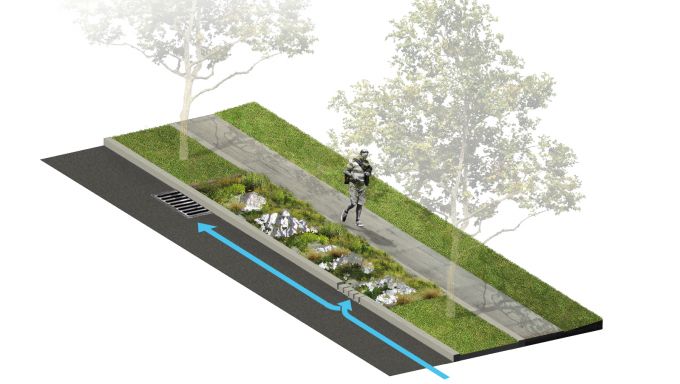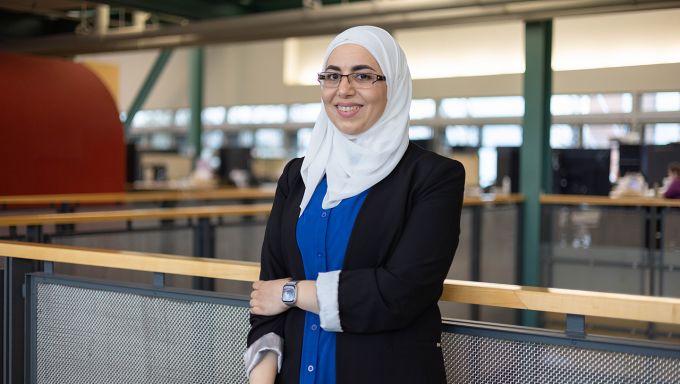- On this Page
- Overview
- Vision & Mission
- Projects
- Publications
- Labs & Facilities
- People
- News
Advanced research and computational design
The SCDC is devoted to advanced design research and learning in computational design. We are a multidisciplinary community of researchers exploring computation as a subject of creative and scholarly inquiry in design across scales and modes of engagement: from the territorial to the micro, from the theoretical to the material, and from the applied to the speculative and critical.

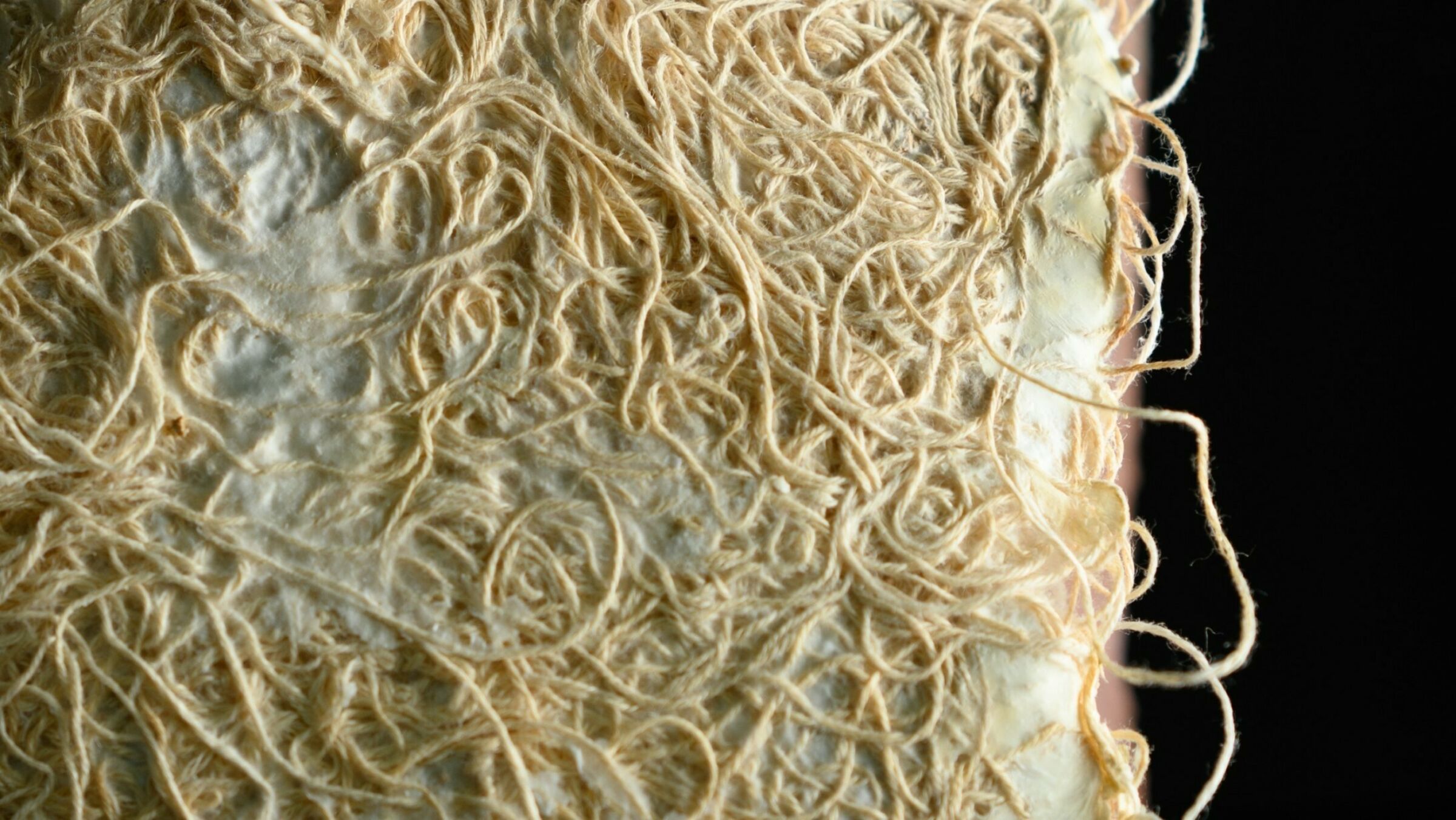

Close up texture of mycelium spores on linen from Felicia Davis research related to textile architecture, bio-sensing smart garments that can improve health outcomes.
Credit: Rebecca Kiger for The Washington PostSmart Textiles and Growing Architecture
SCDC faculty and Ph.D. candidate researchers are receiving awards and accolades for ground-breaking research and scholarship related to textile architectures – from bio-sensing ‘smart’ garments that can improve health outcomes to large-scale, fungus-based composites and cultivated biodegradable structures.
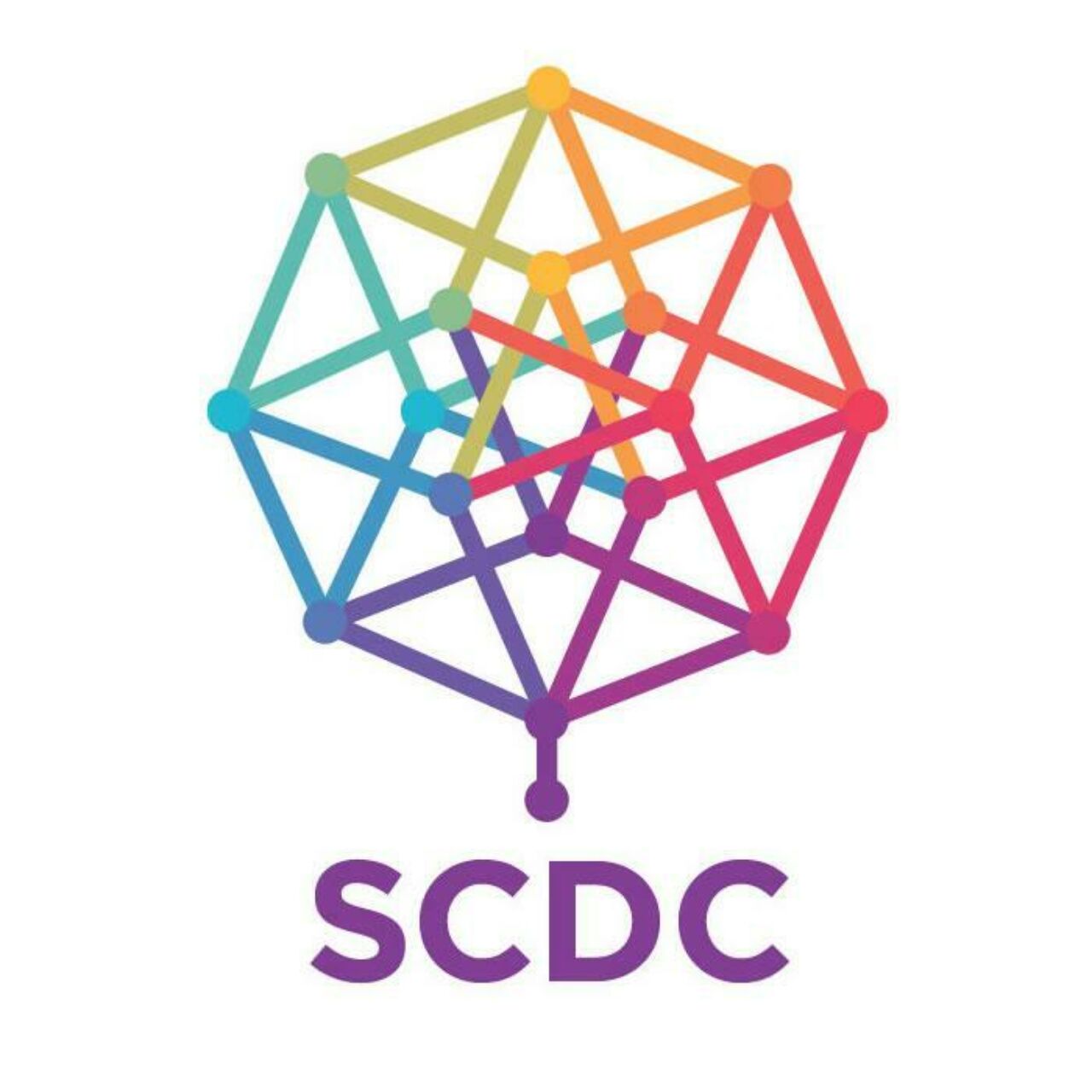
Vision
Through high-impact research and publications spanning the design fields, the SCDC will contribute to society’s understanding and application of computing and information technologies in the production of built environments across scales – from cities to territories, buildings, products, and interfaces.
Mission
The SCDC’s mission is to become a design research and learning center of international relevance. This entails fostering an open and multidisciplinary culture of research that engages faculty, doctoral researchers as well as master and undergraduate students. Beyond the Stuckeman School’s three excellent design programs in architecture, landscape architecture, and graphic design, the center will take advantage of Penn State’s status as one of the largest and most important public research universities in the United States to initiate design-centered collaborations with partners in the scientific fields and the humanities. Furthermore, the center will form and maintain alliances with peer centers in academia and industry both nationally and internationally.
Resources
The SCDC encompasses a number of state-of-the-art facilities including an Immersive Environments Laboratory (currently under re-construction), the Stuckeman Center Laboratory, and a Digital Fabrication Laboratory including an architectural robotics lab. The Stuckeman School, which houses the SCDC, is part of the College of Arts and Architecture, a vibrant arts and design community also comprising the School of Music, the School of Theatre, the School of Visual Arts, and the Department of Art History, along with the Palmer Museum of Art and the Center for the Performing Arts.
Plans
The SCDC is currently implementing initiatives to improve the dissemination of its work – to the Stuckeman community and to society at large – and better communicating the value of the research and advanced instruction taking place in the Center. The SCDC plans to tackle this challenge through two initiatives. The first is by organizing a yearly open house event in the SCDC Laboratory. This is a one-day event showcasing the finished and ongoing projects of the Center through demos, an exhibition, and talks. All school students and faculty are invited. Second is by the design and development of a high quality, media-rich, and responsive website for the SCDC highlighting its projects and teams, as a “Lab of Labs.”
The Stuckeman Center Laboratory
The Center is headquartered in the Stuckeman Center Laboratory – a large and beautiful space on the first floor of the Stuckeman Family Building on the University Park campus. The laboratory hosts various projects led by faculty and post-doctoral Fellows, involving graduate, undergraduate, and visiting students as research assistants.
Research Projects
Below is a selection of SCDC projects, which variously engage architectural robotics, simulation and visualization, game development, Geographic Information Systems, sustainable development, digital fabrication, as well as historical and theoretical aspects of computation in design.
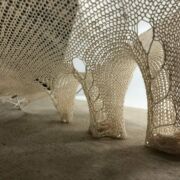
MycoKnit
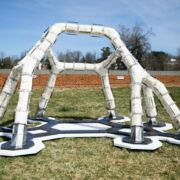
MycoCreate 2.0

Smart Materials and Buildings
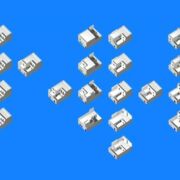
Mass Customization and Grammar Studies

LSD – Augmented Reality
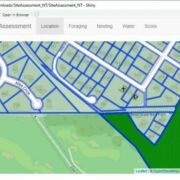
A Web App for Urban Pollinator Site Assessment

Barrier for Outside Outpatient Testing of Heath

Woven Water Filter
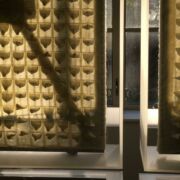
Felt

Costuming and Dancing Sculptures
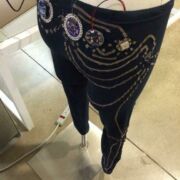
Quantified Walk Project

Woven Light
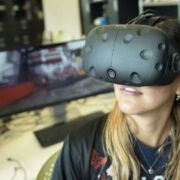
Decoding and Recording Informal Settlements
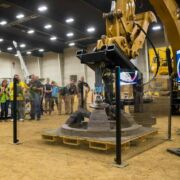
Additive Manufacturing of Architectural Structures
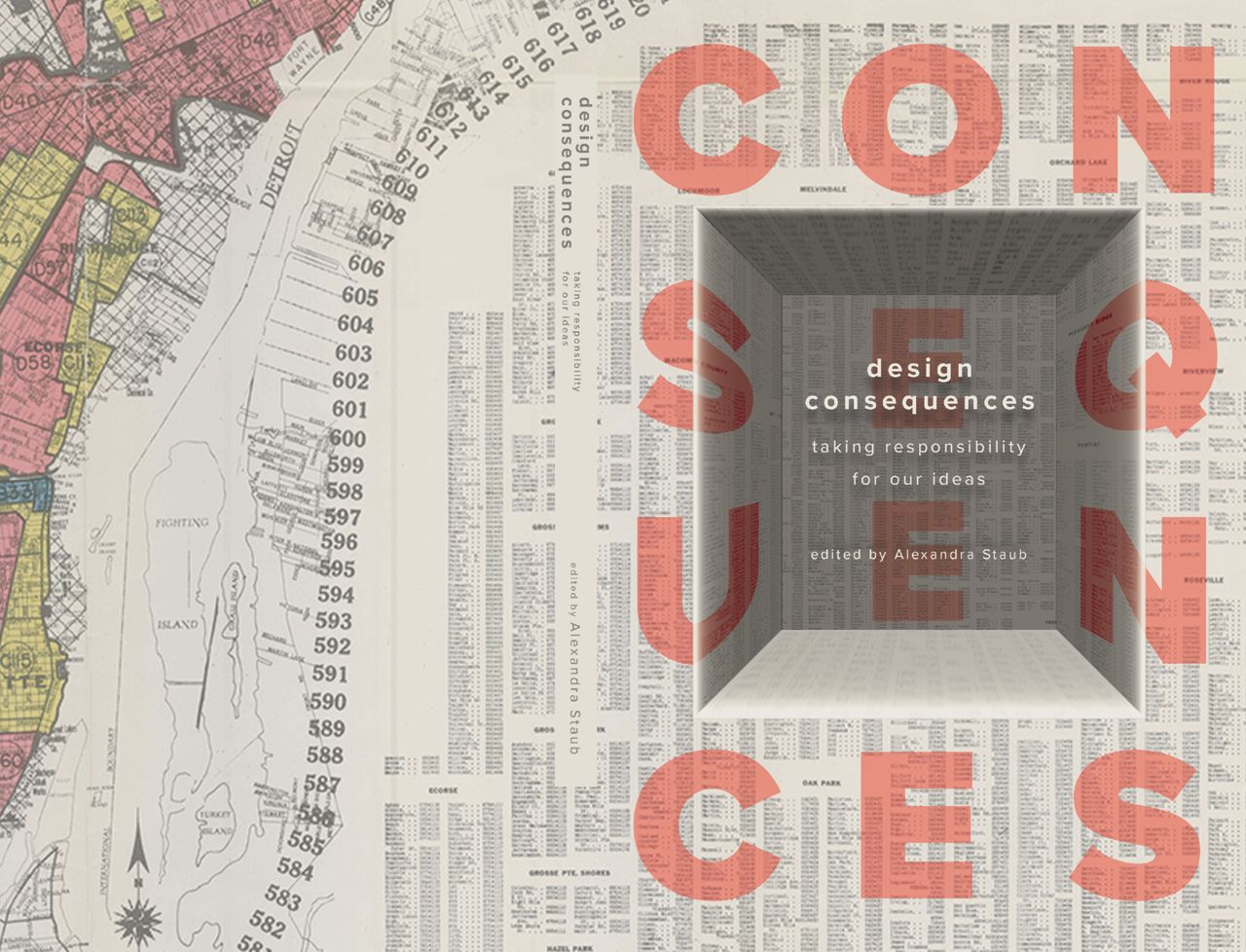
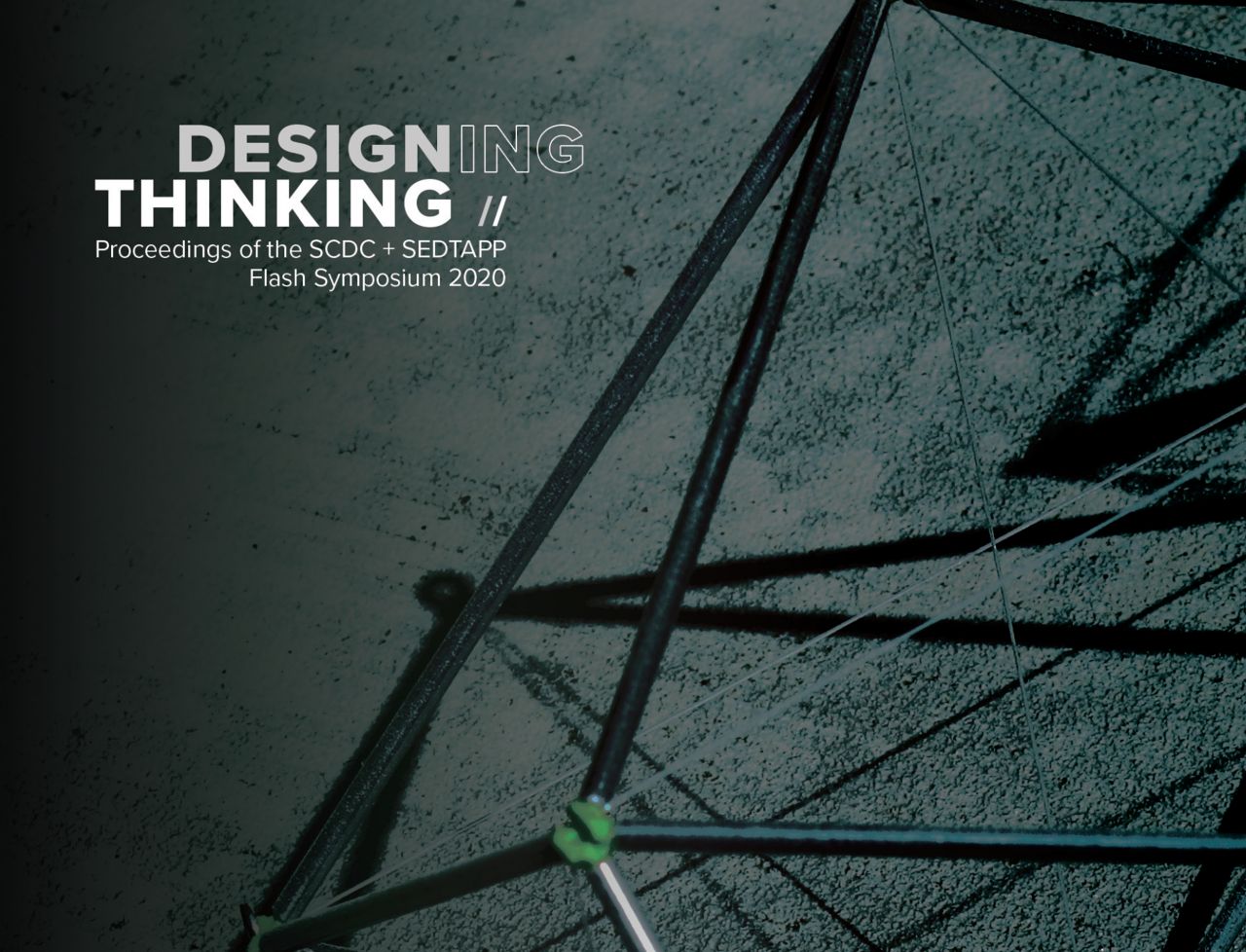
Publications
Following is a brief overview of publications that have been produced to document research, events, and courses within the Stuckeman Center for Design Computing.
Featured Publications
Design Consequences
The 2021 Stuckeman School Research Symposium, "Design Consequences: Taking Responsibility for Our Ideas," explored how the built environment can advance social equity.
Link: Issuu
Publicaton date: 2023
Edited by Alexandra Staub
Design Thinking
These proceedings from the collaborative SCDC + SEDTAPP 2020 Flash Symposium explore how, as designers, we design thinking. How do we design holistic approaches to curating and optimizing the spaces, scenarios and systems within which we design – so as to fully and beneficially leverage the feedback loops between our environmental (and social and psychological, etc.) contexts and our thinking (processes and outcomes)?
Link: Issuu
Publication date: 2023
Edited by Yasmine Abbas
Materiality + Computing
Computation, as a term, is itself very open-ended. There are various ways to compute in design as we see through the SCDC Flash Symposium series. The theme for 2018, to accompany computing, is materiality.
Link: Issuu
Publication date: 2020
Mass Customization and Design Democratization
Parametric design and digital fabrication are enabling non-designers to mass produce non-standard, highly differentiated products – from shoes and tableware to furniture and even houses. The result of these newly available mass customization tools has been a ‘democratization’ of design.
Links: Routledge | Amazon
Publication date: 2019
Team: Edited by Branko Kolarevic, José Pinto Duarte
People
Faculty, staff, students, as well as external researchers and industry professionals all contribute to the vital exchange of ideas and technologies in the SCDC.
Core faculty come from the Stuckeman School’s Architecture, Landscape Architecture, and Graphic Design academic units. All involved are driven by the possibilities of advanced computation and its affordances for improving products and processes for people.
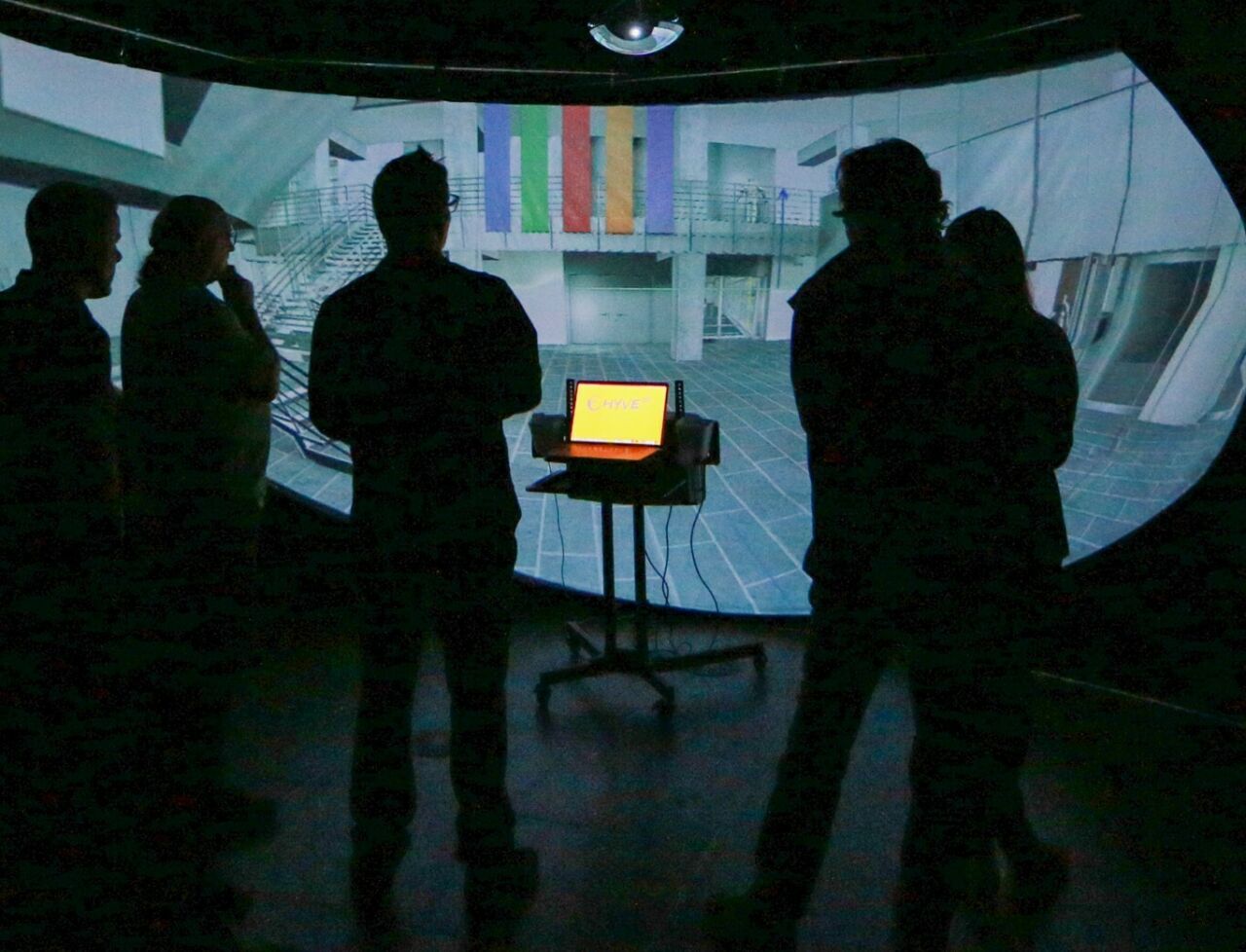
Core Faculty Researchers
David Goldberg
- Associate Clinical Professor of Landscape Architecture
- Director of Penn State Geodesign
José Pinto Duarte
- Director, Stuckeman Center for Design Computing
- Stuckeman Chair in Design Innovation
Affiliate Researchers
Nicholas Meisel
- Associate Director of Engineering Design Graduate Programs
- Associate Professor
Zoubeida Ounaies
- Director, Convergence Center for Living Multifunctional Material Systems (LiMC2)
- Professor of Mechanical Engineering
